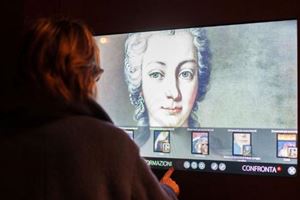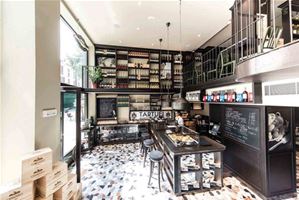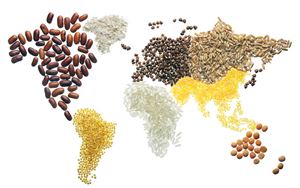Lampredotto,
bistecca fiorentina, ginestrata, fagioli all’uccelletto, polpettone, pasta e
ceci, lepre in dolceforte, biscotti di Prato: the first edition of the Biennale
Enogastronomica Fiorentina Leo Codacci has it all-and much more. With food and wine
that stimulate the senses and feed the soul, this two-week event, at locations
around the city, is dedicated to the region’s specialties.
The Biennale Enogastronomica
(November 10-24) celebrates and revives Florence’s rich
culinary and oenological tradition. Workshops, tastings, talks. the chance to
rediscover lesser-known and long-lost dishes, and an amateur bake-off are just
some of the events featured at one of the most comprehensive culinary festivals
Florence has ever seen.
Biennale director and noted eno-gastronomo Leonardo Romanelli explains that it is important to revive Florence’s remarkable
culinary tradition: ‘It became clear that Florence restaurateurs were in need
of new stimuli in the kitchen and to go back to their roots, especially in such
uncertain economic times’. The festival hopes to inspire local chefs to dish up
the local specialties that Florence is revered for the world over, but that are
hard to find in the city these days.
Thus un piatto tipico al ristorante (‘a typical
dish of the restaurant’) is the focal point of the festival. More than 80 restaurants
will revisit traditional local dishes and foods over the two weeks of the
festival. Each restaurant will present a menu featuring both well-known and
lesser-known regional dishes. ‘It’s a way for restaurateurs to rediscover uncommon
traditional dishes and innovate with tradition’, says Romanelli.
Prices and dishes vary, Romanelli says,
reflecting the wide range of participating restaurants: ‘what delights me the
most is the success of the initiative among both luxury restaurateurs and less
expensive trattorie; there’s a vast selection of food’.
Dedicated to the late Leo Codacci, Florence’s own enogastronomico par excellence, this festival’s inaugural year makes reality Codacci’s
long-held dream: instituting a food festival that celebrates and preserves the
region’s gastronomic treasures and showcases its culinary excellence. Codacci
organized Florence’s first food festival in 1976 and was a pioneer in the
movement to blend food science and culture-an idea later promoted by the immensely
popular Slow Food movement.
The festival’s offerings are proof that 32 years
later Codacci’s passion for the region’s authentic foods has finally been embraced.
The celebration of fiorentinità opened on November 10 with sizzle and
kick. With coach Cesare Prandelli present, the bistecca fiorentina and
the AC Fiorentina represented the city’s two biggest passions: steak and
soccer. On November 11, the feast San Martino, the patron saint of the poor,
Caritas Firenze and festival organizers held a special lunch for the city’s
poor, with food and wine served by restaurants Il santo bevitore and Gli Agricoltori
del Chianti Geografico.
Street food, revered by Codacci, takes centre
stage in Piazza Antigioni from November 13 to 16. Florence’s world-renowned cibi
di strada, the lampredotto and trippa, will be served up as
will other street foods from across Italy and world. Porchetta sandwiches, piadina emiliana, arancini siciliani, as well as a
wide range of kebobs and ethnic ‘fast foods’ remind us, says Romanelli, that
‘In times of economic crisis, street foods are an affordable alternative, and
Florence’s strong street food tradition is an important part of the city’s
culinary background.’
The wines flow on November 15 and 23, with the
latest vintages of Chianti Rufina being poured at the Villa Poggio Reale. On November 21, a panel of food experts
and middle-school students will determine the winning snack in the Il dolce
della merenda: Concorso Gaia Gatteschi.
One of the region’s most prized gastronomic
treats, extra virgin olive oil, merits its own day on November 22. Called Olio
dal vivo, the daylong happening includes workshops, guided tastings, and
lessons from expert chefs, all against the backdrop of former Medici abode
Villa Malenchini.
On November 24, leading chefs and winemakers from
the region and country will discuss Tuscan cuisine’s past, present, and ponder
its future. Closing the festival is a gala event at Piazza del Carmine’s
Limonaia in Florence for participants, organizers and the press.
The party continues: in early De-cember the city’s
celebrated Enoteca Pinchiorri will host a banquet for the elderly and destitute
at the Fondazione Montedomini.
The full programme of events is available at www.biennaleenogastronomica.com
Leo Codacci: pioneer of taste
‘You are old when you are no longer enthusiastic over
the smell of bread that has just been taken out of the oven and when you forget
the determined taste of olive oil that has just been pressed’, wrote Leo
Codacci on his 80th birthday. At the first event dedicated to the culinary
excellence of Florence, the Biennale Enogastronomica in 1976, Codacci sang the
praises of the succulent lampredotto, ribollita and trippa.
Helping to establish the Consorzio degli
ambulanti trippai di Firenze after the Florence flood in 1966, Codacci became
one of the most important promoters of the Associazione Sommelier and the
Associazione Gastronomica in Tuscany.
Long-time advocate of the importance of preserving
local specialities and promoting the joys of eating, Codacci wrote about his
passion. His books on the culinary uniqueness of Florence and Tuscany remain
among the world’s most authoritative texts on the subject.
In his most well-known book, Civiltà della tavola
Contadina in Toscana (1981), Codacci celebrates the rich rural and pastoral
tradition that characterizes Florence’s culinary history. Other books include
recipes, restaurant guides and reflections on the strong bonds that link food
and the pastoral tradition in Tuscany.
A quick author search will open the repository of
Codacci’s articles and recipes at www.coopfirenze.it







